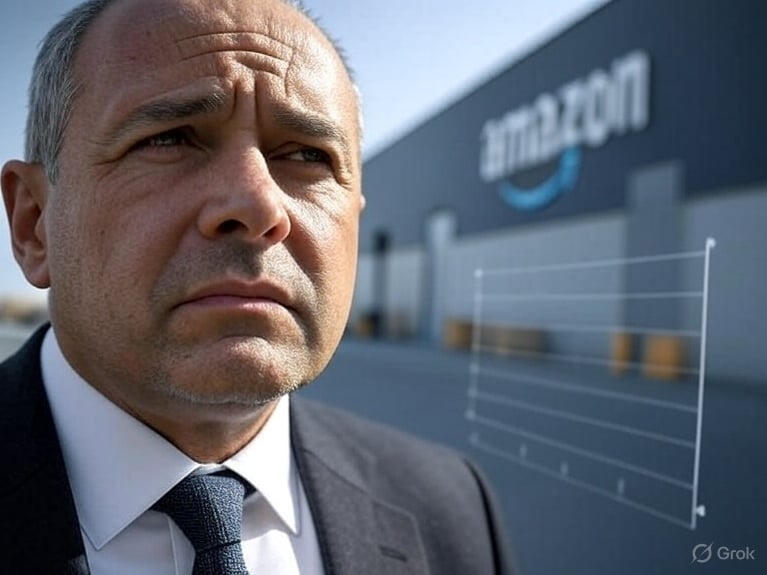
The Perils of Single-Channel Selling: Why Amazon Alone Isn't Enough
TL;DR: Relying solely on Amazon for your e-commerce business is like building a house on quicksand. Recent policy changes, account suspensions, and increased competition show why smart sellers diversify across multiple channels—and tools like Skupreme make omnichannel selling simpler than ever.
In the world of e-commerce, Amazon has long been viewed as the golden ticket to success. With its massive customer base and fulfillment infrastructure, it's tempting to put all your eggs in the Amazon basket. But as thousands of sellers have learned the hard way, this strategy can be catastrophic when things go wrong.
The Amazon Tyranny: When Giants Turn Against Their Own
Amazon's dominance has created what many sellers describe as a monopolistic environment where the platform holds all the cards. Recent events have shown just how quickly Amazon can disrupt—or destroy—a seller's entire business with policy changes, account suspensions, or algorithm adjustments.
Recent Examples of Amazon's Disruptive Power
1. The Reimbursement Policy Overhaul (March 2025)
Starting March 10, 2025, Amazon drastically changed its FBA reimbursement policy, shifting from reimbursing sellers at full retail cost for lost or damaged inventory to only covering manufacturing costs. This excludes critical expenses like shipping, handling, customs duties, and packaging—costs that can represent 50-70% of a product's total investment.
One seller calculated that their potential reimbursements would drop from $108,000 to just $62,000—a 42% reduction. Another seller expects their reimbursement payouts to drop as much as 70%, while Craig Leslie, founder of The Bean Coffee Company, said the policy change could cut his reimbursements in half.
2. The Returns Processing Fee Introduction (June 2024)
Amazon introduced a returns processing fee for high-return rate products across all categories (excluding apparel and shoes), adding another cost burden to sellers already struggling with thin margins. This fee particularly impacts sellers of electronics, home goods, and other categories with naturally higher return rates.
3. Mass Account Suspensions and the INFORM Act
Based on the INFORM Consumers Act, Amazon required sellers to provide extensive verification information by June 27, 2023, with accounts facing deactivation if compliance wasn't met. Amazon suspensions can range from temporary restrictions to permanent bans, with funds held for 90 days and sellers losing access to their primary income source overnight.
Real Stories from the Trenches
Beyond the policy changes, individual sellers regularly face account disruptions that can destroy years of work. One anonymous seller recently shared their experience in a social media group:
"Amazon fees are just killing me and we started trying to expand off Amazon 6+ months ago with okay success. I sell a guitar stool on Amazon. It is nothing fancy but the ceiling is low (10-14 units a day) and the 5+ competitors in the market all hold their prices at 90.00 on Amazon which makes it impossible to raise pricing. My COG on this item is 34.00 and on Amazon we only make 8.00 after PPC, returns, fees, etc. This is a TRASH item."
The seller went on to explain how they created an improved version of their product and launched it on their own site at $149.99, achieving a much higher profit margin. "Moving 23 units a week on our site at this 2.79 ROAS gives us about 972 profit per week. When we sell our cheap version on Amazon, we have to sell 121 units to make the same 972 per week and our price is locked in."
This story perfectly illustrates how Amazon's competitive environment can trap sellers in a race to the bottom while the platform takes an increasingly large share of the profits.
The Corporate Exodus: Even Big Brands Are Diversifying
The trend away from Amazon-dependency isn't limited to small sellers. Major companies are also recognizing the risks:
Peloton's 2022 partnership with Amazon marked the fitness giant's first foray outside its direct-to-consumer model, but the company clearly stated its intention to explore partnerships with other retailers to extend its reach beyond Amazon. This move came as Peloton sought to reduce customer acquisition costs and broaden distribution—a strategy many smaller sellers should emulate.
Meanwhile, some merchants are finding success by switching to alternative platforms entirely. Recent reports show Amazon merchants successfully transitioning to TEMU's lower-cost platform, highlighting how platform alternatives can offer better profit margins despite different business models.
The Platform Algorithm Roulette
Amazon's algorithm changes can instantly impact visibility and sales. Sellers regularly face issues with listing suppression, intellectual property complaints, and performance metric violations that can suspend accounts with little warning. When your entire business depends on one platform's ever-changing rules, you're essentially gambling with your livelihood.
The Power of Diversification and Optionality
Smart sellers understand that diversification isn't just about risk management—it's about creating multiple revenue streams and maintaining pricing power. Here's why omnichannel selling provides crucial advantages:
Financial Diversification
Just as investors diversify their portfolios, sellers need to diversify their sales channels. If Amazon represents 80% of your revenue and your account gets suspended, you lose 80% of your income overnight. Spread across 4-5 channels, and a single platform issue only impacts 20% of your business.
Pricing Optionality
When you're not dependent on a single platform, you maintain pricing power. The guitar stool seller mentioned above couldn't raise prices on Amazon due to competition, but achieved nearly 4x the profit margin on their own site. This optionality becomes crucial as platforms increase fees and squeeze seller margins.
Data and Customer Ownership
Selling only on Amazon means you don't own your customer relationships. When you diversify to platforms that allow direct customer communication—or better yet, your own website—you build valuable customer data and relationships that no platform can take away.
Reduced Platform Risk
Policy changes, fee increases, and algorithm updates affect all platforms differently. By diversifying, you spread this risk and often find opportunities when one platform's changes drive customers to competitors.
Omnichannel Made Simple with Skupreme
The biggest barrier to omnichannel selling used to be complexity. Managing inventory, pricing, and orders across multiple platforms was a nightmare of spreadsheets and manual updates. But modern tools like Skupreme have eliminated these friction points.
Skupreme makes omnichannel selling as simple as managing a single platform by:
-
Centralized Inventory Management: Update stock levels once, sync everywhere
-
Unified Order Processing: Handle orders from all channels in one dashboard
-
Automated Pricing Strategies: Maintain competitive pricing across platforms without manual updates
-
Multi-Channel Analytics: Get a complete view of your business performance across all sales channels
In uncertain times, when platform policies change overnight and competition intensifies, you need maximum exposure to succeed. Skupreme ensures you're selling everywhere your customers are shopping, not just where it's convenient for you to manage.
The Path Forward: Embracing Channel Diversification
The evidence is clear: single-channel selling is a risky strategy that puts your entire business at the mercy of one platform's decisions. The sellers thriving in today's environment are those who've built diversified channel strategies that provide:
- Revenue stability through multiple income streams
- Pricing power through reduced platform dependency
- Customer ownership through direct relationships
- Growth optionality through exposure to different customer segments
Amazon will likely remain an important channel for most sellers, but it shouldn't be your only channel. The cost of diversification has never been lower, and tools like Skupreme have made omnichannel selling accessible to sellers of all sizes.
Don't wait for the next policy change, fee increase, or account suspension to start diversifying. The sellers who start building their omnichannel strategy today will be the ones still thriving when the next platform disruption hits.
Ready to reduce your platform risk and unlock new growth opportunities? Explore how Skupreme can simplify your omnichannel selling strategy and help you build a more resilient, profitable business across multiple sales channels.



Add Your Comment